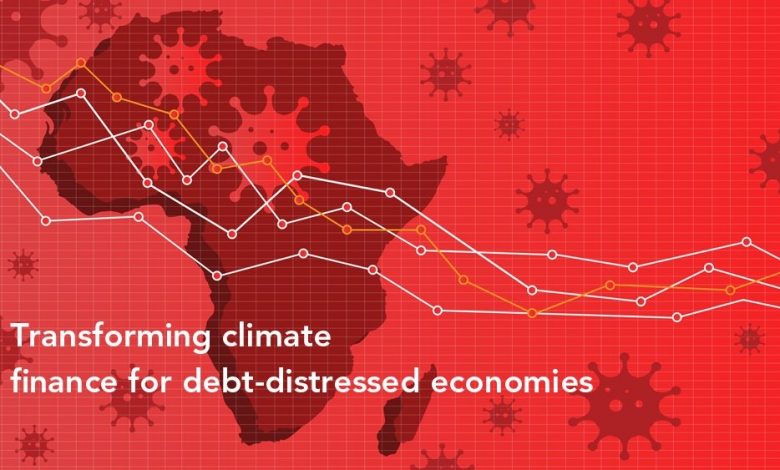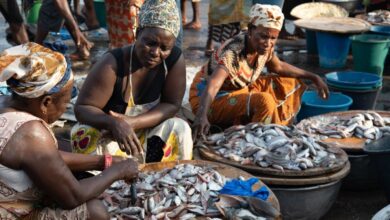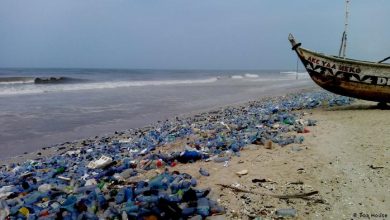
Transforming climate finance for debt-distressed economies during COVID-19
One year after the World Health Organisation declared the COVID-19 disease as a global pandemic, many emerging markets and developing economies (EMDEs) have experienced a sharp drop in commodity prices, a massive contraction in export volumes, loss of remittances and tourism, and unprecedented capital outflows.
COVID-19 has greatly exacerbated debt vulnerabilities in EMDEs at a time when many countries are expected to scale up investment in climate related programs.
So far, 54 per cent of low-income countries are deemed to be in debt distress or at high risk of debt distress as of December 2020, a trend likely to continue into 2022.
In Ghana for example, the government plans to spend GHC35.8 billion (49.5 per cent) of its expected total revenue of GHC72.4 billion on servicing loan interests, while the Nigerian government has planned to spend ₦3.12 trillion (40 per cent) of the expected total revenue of ₦ 7.89 trillion on debt financing for 2021.
Faced with such a constrained fiscal space, developing countries have only a few options available. EMDEs need to focus on designing sustainable models of climate financing, especially aimed at accelerating and fully integrating climate-aligned structural change at the private sector.
Climate mainstreaming in the private financial sector
The broader private financial system in EMDEs, including commercial banks, investment banks, insurance companies and micro-finance institutions can make a huge contribution when it comes to meeting the net zero goals by 2050.
The private financial sector in developing countries must aggressively align their lending portfolios with the Paris Agreement, building on the joint statement at the recent Finance in Common Summit of all public development banks.
So far, although many countries in sub-Saharan Africa have begun to integrate climate change policies into national development plans at the public level, very little has been done at the private financial level.
National governments should play a more active role in the various dimensions of Article 2.1c implementation through coordination, harmonisation and regulation. Governments should work closely with the private sector to set minimum rules that all players must follow.
At present, in EMDEs, 80 per cent of infrastructure investment is mostly publicly financed; private investment in infrastructure has stagnated over the past decade and amounts to less than $100 billion annually. The private financial sector must step up Paris-aligned infrastructure investments to reduce the pressure on public finance.
Debt-for-climate swap
Poverty is increasing for the first time in more than two decades, and levels of food insecurity is likely to double as a result of the deep economic consequences of COVID-19 (with as many as 265 million people pushed to the brink of starvation).
According to the 2020 Brooking Institute report, developing countries will be asked to pay $865 billion in debt service on medium and long-term debt in 2021 (of which $346 billion is owed or guaranteed by governments).
While the G20 decision to extend the Debt Service Suspension Initiative until the end of 2021 is welcomed, a permanent resolution of the debt issue is urgently needed—one which is fair, progressive and equitable, different from the structure of the HIPC Initiative in the 1990s.
The idea of a “debt-for-climate” swap was first conceived during the 1980s by the then Deputy Vice President of the World Wildlife Fund, Thomas Lovejoy, in the wake of the Latin American debt crisis.
Debt-for-climate swap is one option with unrealised potential that could be deployed further to reduce carbon emissions and promote different forms of sustainable finance, as well as to reinforce climate resilience. This could focus on countries that are able to service their debt and would be willing to redirect the debt service cash flows into mutually agreed climate initiatives in exchange for reduction or forgiveness of the debt.
The global pandemic implications for climate finance are immense, which is why it is important to deploy all available tools to build back better and meet the goals of the Paris Agreement.
Extension of the $100 billion climate fund
The commitment by developed countries to jointly mobilise $100 billion in climate finance by 2020 to support developing countries is at the heart of the Paris Agreement. But a report by the Independent Expert Group on Climate Finance has noted that the $100 billion target has not been reached, which means that there must be a renewed push beyond 2020.
Coupled with failure to meet the $100 billion climate target, Oxfam has also reported that only around 20 per cent of reported public climate finance was estimated to be grants, compared to 80 per cent reported as loans and other non-grant instruments; of all reported climate finance, an estimated 40 per cent was non-concessional.
According to Oxfam, this is harming the economies of least developed countries by contributing to rising—and in many countries, unsustainable—debt levels.
A credible plan to improve climate financing to EMDEs would be essential to an agreement at COP26.
The following key considerations could guide discussions at COP26 in November:
- Debt-for-climate swaps should be considered a part key part of climate financing and counted as such, while governments in developed nations and actors in private bond markets should be encouraged to take a critical look at debt forgiveness programs aligned with Paris objectives.
- Developed countries should commit to significantly increase climate finance to EMDEs particularly concessionary and grant based support.
- There should be a renewed effort to increase financing for adaptation programs with a minimum of 50 per cent of their overall public climate finance contribution.
- Finally, there must be increased transparency when it comes to disclosure of the terms of loans and other instruments being used to provide climate finance by developed countries.
The path for climate finance post-2020 should be truly transformational: it should incorporate climate-aligned debt relief initiatives, accelerate grant-based finance and improve global accounting standards for all donors.
This was first published by the European University Institute, based in Florence, Italy
Gideon Sarpong is a Policy Leader Fellow at the School of Transnational Governance, European University Institute, Florence, Italy. He is also a co-founder of iWatch Africa. His research interests include climate finance, ocean climate policy and internet governance.






